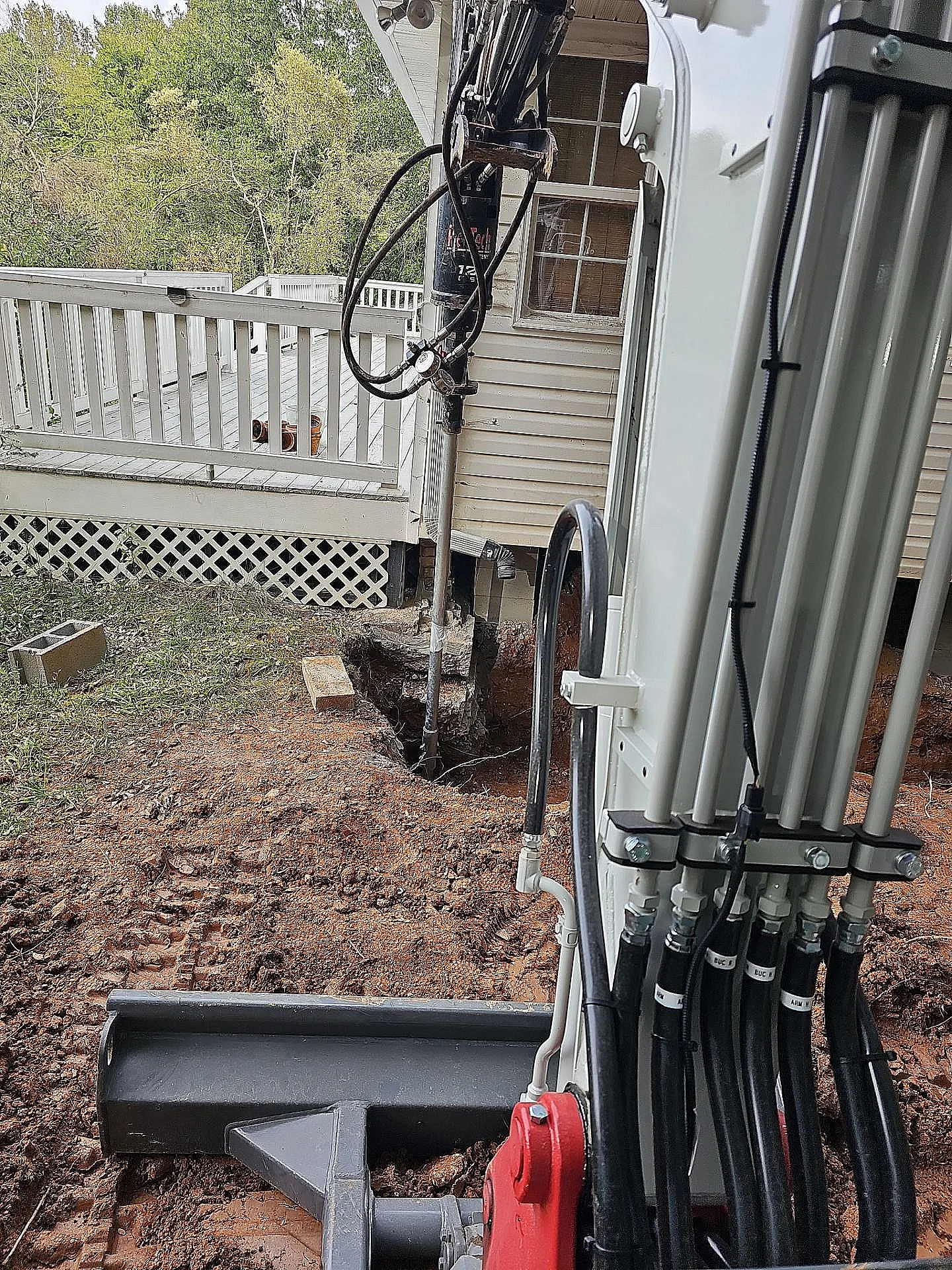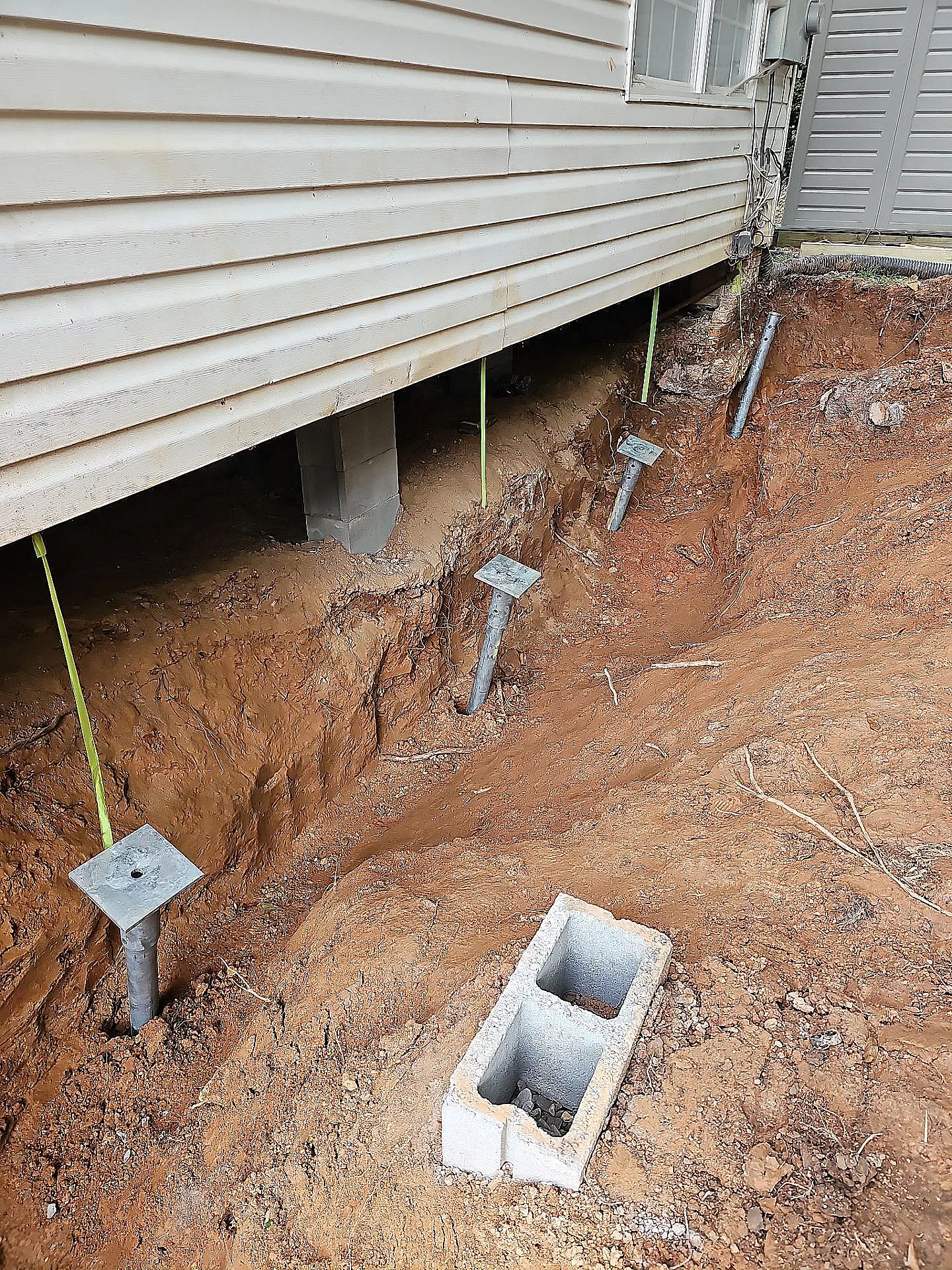By Walsh Crawl Space | Published on November 19, 2024
Helical piers, also known as screw piles, provide an effective and long-lasting solution for stabilizing foundations and preventing structural damage. This guide explores how helical piers work, their benefits, and why they’re ideal for homes experiencing settlement or uneven foundations.

Helical piers offer a dependable solution for stabilizing homes with sinking or uneven foundations.
Helical piers are steel foundation supports that are screwed into the ground to stabilize or lift foundations affected by soil movement or settlement. They consist of a shaft with helical plates, which allow the pier to anchor deeply into stable soil layers. By redistributing the load of the structure, helical piers provide lasting support for foundations, preventing further movement and damage.
If your home exhibits signs of foundation settlement—such as cracks in walls, sticking doors, or uneven floors—helical piers might be the ideal solution. These piers are designed to counteract poor soil conditions that can no longer support the weight of the structure. Whether your home is built on expansive clay, poorly compacted fill, or in areas with high water tables, helical piers can offer the stabilization and lifting required to restore the foundation’s integrity.
The installation process involves driving the piers into the ground until they reach stable soil strata or bedrock. The helical plates on the shaft ensure a secure hold, allowing the piers to transfer the building’s weight to more reliable soil. Helical piers are a minimally invasive solution and can be installed in limited access areas, making them versatile and efficient for various foundation repair projects.
Foundation experts begin by evaluating the soil conditions and identifying the areas requiring reinforcement. This step ensures the appropriate placement and number of helical piers for optimal stabilization.
Using hydraulic equipment, the helical piers are screwed into the ground to the required depth, bypassing weak or unstable soil layers. Each pier’s torque is monitored to confirm adequate load-bearing capacity.
Once the piers are in place, brackets are attached to the foundation to secure it to the piers. This connection ensures even weight distribution and prevents further settlement.
The final step involves lifting the foundation, if necessary, to its original position. The home is then permanently stabilized, protecting it from future settlement issues.

Walsh Crawl Space: We specialize in helical pier installation and foundation repair. Let our experts restore your home’s stability. Contact us for a consultation today.
Helical piers can be used in most homes experiencing foundation settlement or instability. However, a professional assessment is necessary to determine their suitability based on your soil and structural conditions.
Installation is typically completed in a few days, depending on the project’s size and complexity. The minimally invasive process ensures minimal disruption to your property.
Yes, helical piers are an excellent choice for new construction projects in areas with challenging soil conditions. They provide a stable foundation from the start, preventing future settlement issues.